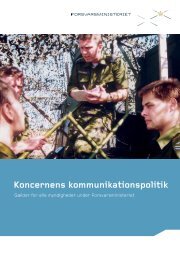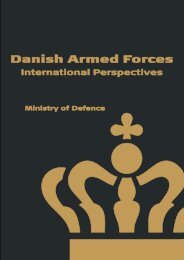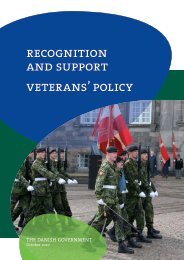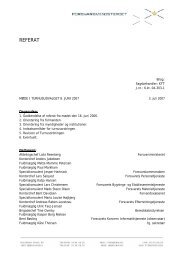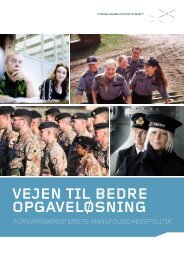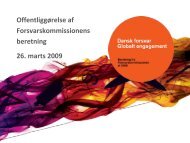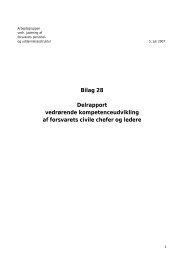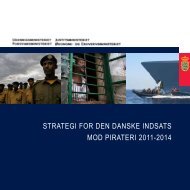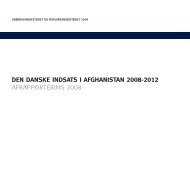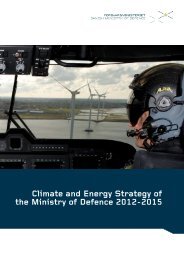Afghanistan Report 2009 - Isaf - Nato
Afghanistan Report 2009 - Isaf - Nato
Afghanistan Report 2009 - Isaf - Nato
Create successful ePaper yourself
Turn your PDF publications into a flip-book with our unique Google optimized e-Paper software.
Power supply allows for night lights throughout Kabul.<br />
Kabul: Lights on<br />
The Emergency Power Rehabilitation Project aims<br />
to provide improved and more reliable power supply<br />
to the people of Kabul through the rehabilitation<br />
and expansion of the city’s distribution network,<br />
rehabilitation of the 100 MW Naghlu Hydropower<br />
Plant and the restructuring and commercialization<br />
of the power utility to improve service delivery. The<br />
works supported under this project, to link Kabul<br />
with the NEPS to receive power from Uzbekistan<br />
and rehabilitation of 110 kV line getting power from<br />
Naghlu Hydropower Plant to the city grid, are now<br />
complete and serving the people of Kabul with<br />
more and reliable power supply.<br />
This project complements the works done<br />
under the ARTF-funded Improvement of Power<br />
Supply to Kabul Project (7.4 million USD),<br />
which has helped in rehabilitating one unit<br />
(22 MW) of Mahipar hydro power project and<br />
the associated 110 KV transmission line. Power<br />
production in Mahipar is key for power supply to<br />
Kabul during the winter as the river feeding this<br />
power station has water only during this season<br />
(December–May) without any other competing<br />
usage. Energy produced in one unit in Mahipar<br />
plant can supply at least 16,000 households during<br />
the winter (assuming the average consumption<br />
of 200 kWh/month in Kabul), replacing expensive<br />
diesel generation.<br />
Besides, the ARTF-funded Kabul/Aybak/Mazare-Sharif<br />
Power Project and <strong>Afghanistan</strong> Power<br />
System Development Project will facilitate<br />
distribution of the additional power that Uzbekistan<br />
has agreed to supply under a new power purchase<br />
agreement with <strong>Afghanistan</strong>, to the languishing<br />
towns that lie along the newly-commissioned<br />
transmission line. This will help to restore the oncebustling<br />
hubs of Mazar-e-Sharif, Aybak, Pul-e-<br />
Khumri, Jabul-es-Seraj, Charikar and Gulbahar to<br />
their old economic vibrancy. (Source: World Bank)<br />
Germany helps providing<br />
Kabul with electricity<br />
Germany’s activities in the energy sector focus<br />
on the improvement and stabilisation of the<br />
energy supply around Kabul, where 39% of<br />
the country’s grid and 65% of the total energy<br />
production are located.<br />
The electricity supply to the capital is provided<br />
primarily by 3 hydro power stations (Naghlu,<br />
Mahipar and Sarobi) and 1 gas turbine plant.<br />
The German Ministry for Economic Cooperation<br />
and Development has contributed 20.5 million<br />
euros for the rehabilitation of the hydro power stations<br />
around Kabul. Moreover, Berlin has allocated<br />
4 million euros to the ARTF for the rehabilitation<br />
of two turbines in the Mahipar power plant.<br />
(Source: German Foreign Office)<br />
The transport network is improving. As of June 2008,<br />
13,150 km of roads had been built or rehabilitated 32 .<br />
The ring road and the main international links (more<br />
than 3,000 km) connecting the country’s major<br />
cities, and <strong>Afghanistan</strong> to its neighbours are almost<br />
entirely refurbished and paved. Thanks to these<br />
developments, average travel times have dropped<br />
and commercial activities are flourishing. Freight<br />
traffic has increased dramatically and is expected to<br />
reach 23.7 million tons per km by 2010 33 . There are<br />
now more than 607,000 vehicles in <strong>Afghanistan</strong> as<br />
opposed to 175,000 in 2002 34 . Most of these vehicles<br />
(576,000) 35 are privately owned. Improved road<br />
transport and higher numbers of privately owned<br />
vehicles are tangible evidence that <strong>Afghanistan</strong><br />
reconstruction process is well under way.<br />
32<br />
UNAMA, 2008.<br />
33<br />
Asian Development Bank, 2008.<br />
34<br />
IMFand Afghan Authorities.<br />
35<br />
IMF and Afghan Authorities.<br />
40



